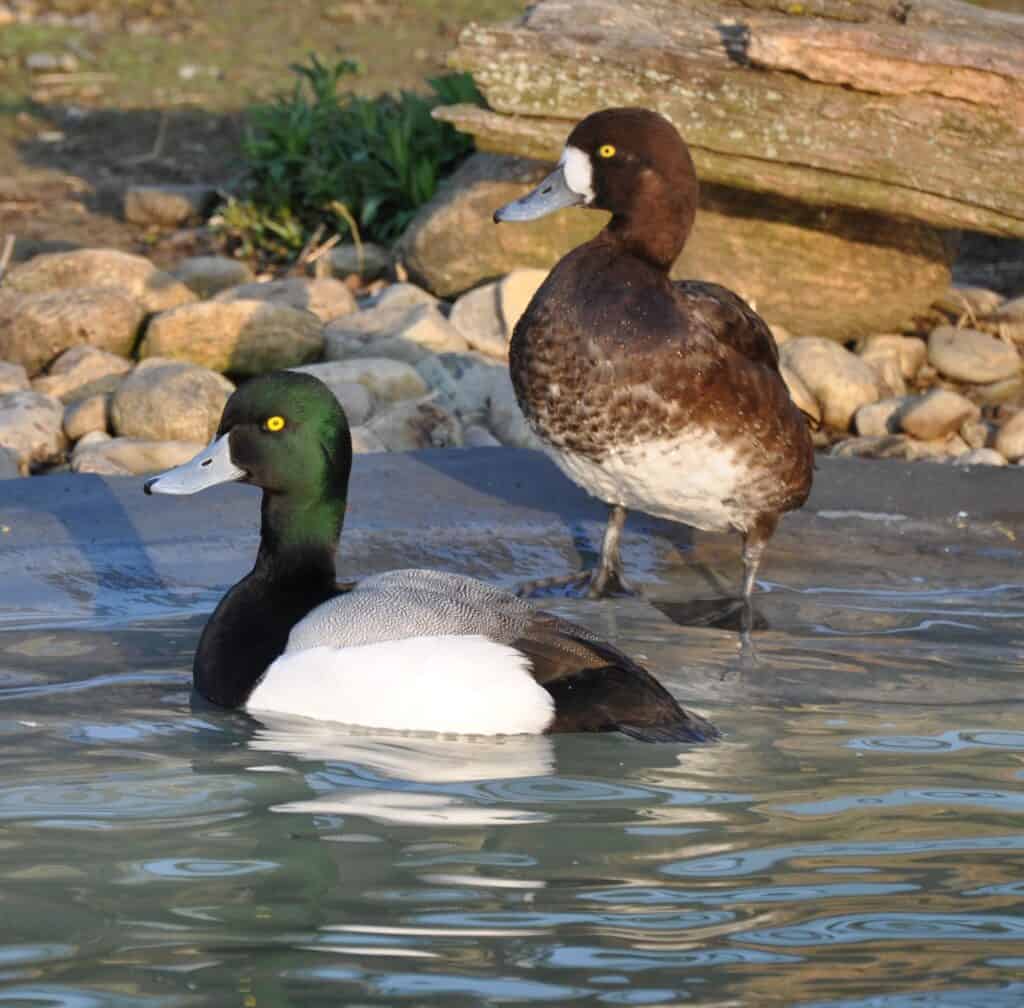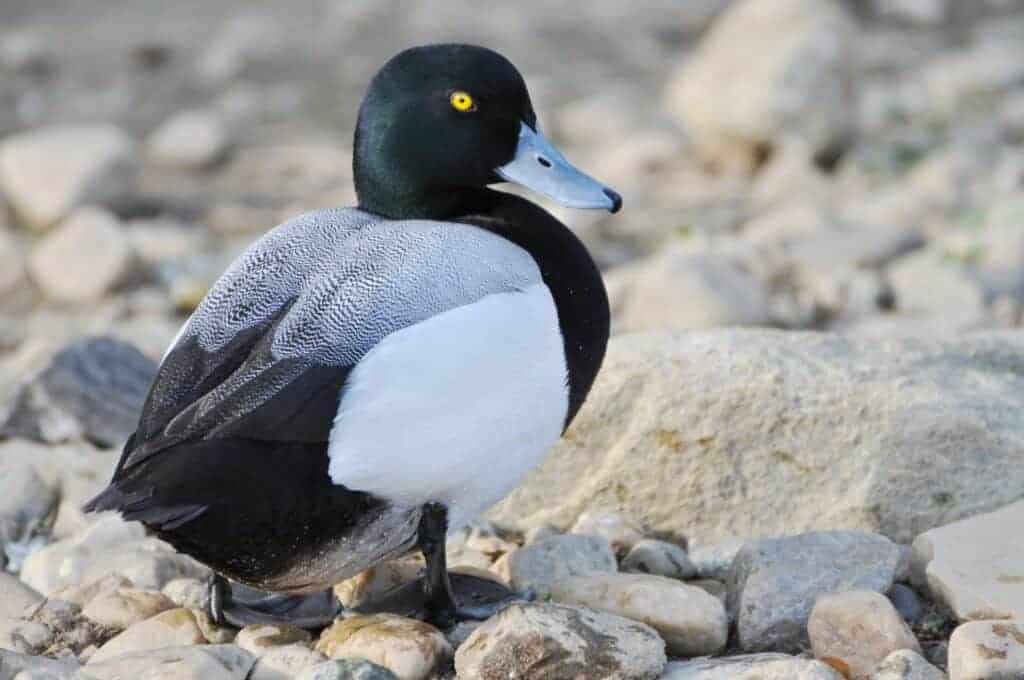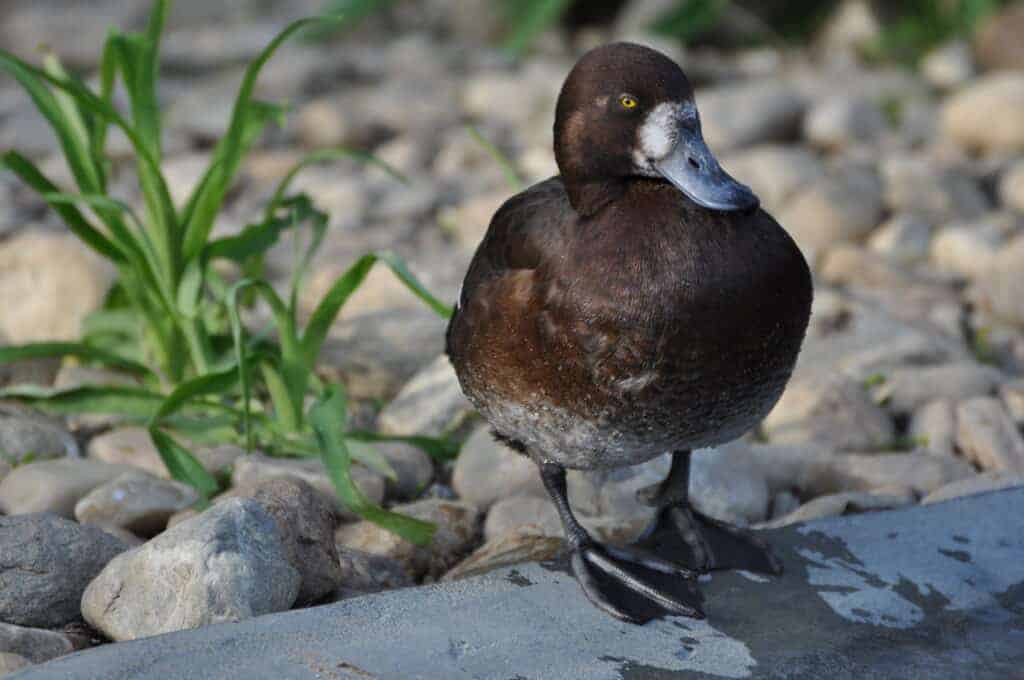Greater Scaup

Two races of Greater Scaup are recognised:
- European A. m. marila of Europe and Asia south to Mediterranean and India
- Pacific A. m. nearctica of north-east Asia and north North America
Aythya marila
Throughout the northern hemisphere, the large, bulky-looking Greater Scaup is a summer visitor to freshwater lakes of the sub-Arctic and Arctic. Winters are spent at sea, often in large flocks, around the Pacific and Atlantic coasts of North America, as well as northern Europe, eastern Asia and Japan. Similar in appearance to the Tufted Duck, the best distinguishing feature is the drake’s grey upperparts. The duck resembles a heavier Tufted Duck, but shows clear white patches around the base of the beak and lacks the head tuft.

Greater Scaup feed by diving: they are omnivorous, for though molluscs form the major part of their diet, at least in winter, they will also readily consume waste grain at brewery or distillery outflows. Here they will congregate in large rafts of several hundred or even thousand birds.

These ducks do well in aviculture, especially when kept in small flocks, for they are a gregarious species.
The clutch size is typically 8-10 eggs, generally laid late in the spring; incubation takes 24-28 days. It is unwise to keep them alongside Lesser Scaup, as they will hybridise (though no wild hybrids have ever been recorded).
FURTHER READING
Stoddart, A. (2019). BirdGuides Tufted Duck, Greater Scaup and Lesser Scaup photo ID guide
Share this page